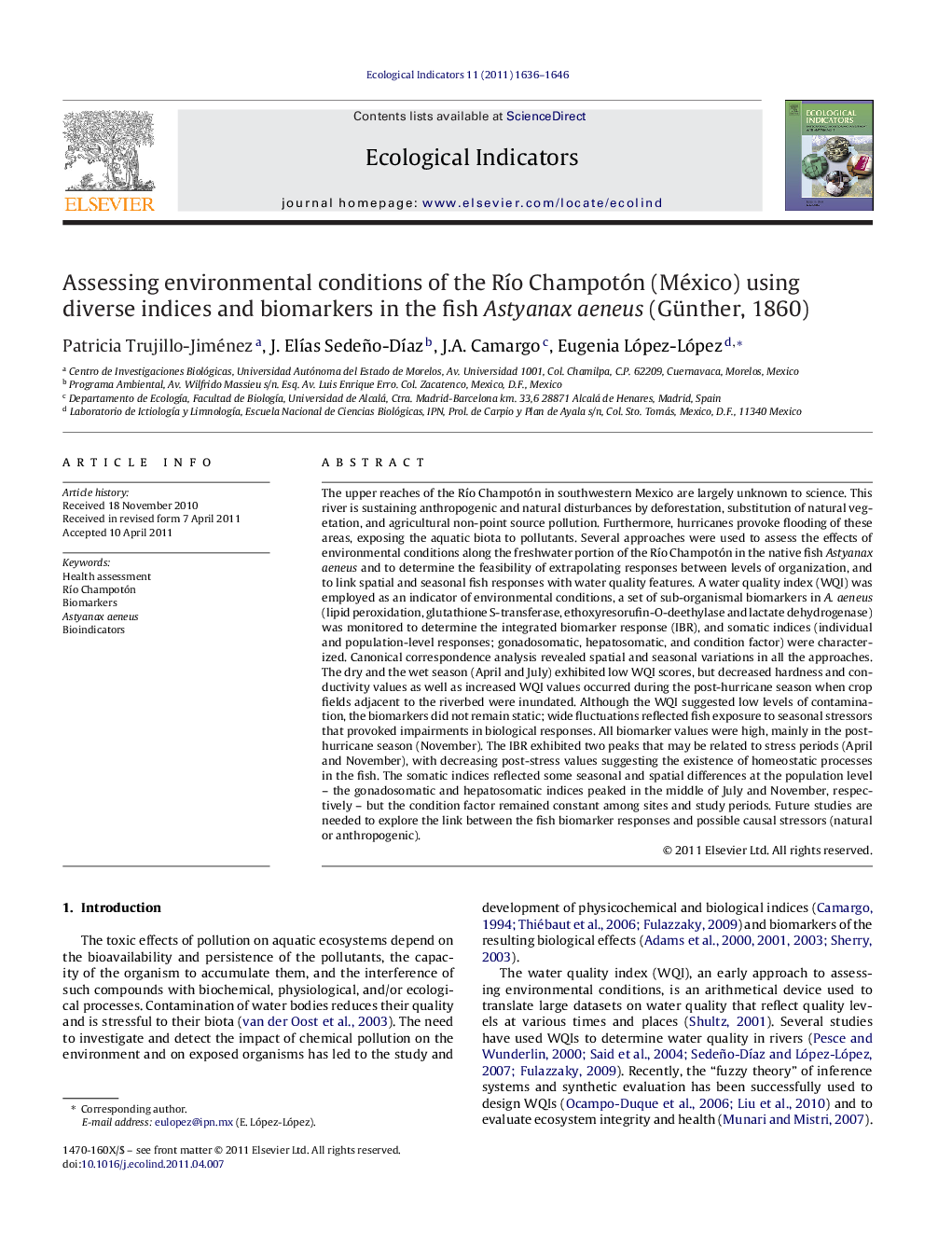| کد مقاله | کد نشریه | سال انتشار | مقاله انگلیسی | نسخه تمام متن |
|---|---|---|---|---|
| 4373979 | 1303159 | 2011 | 11 صفحه PDF | دانلود رایگان |

The upper reaches of the Río Champotón in southwestern Mexico are largely unknown to science. This river is sustaining anthropogenic and natural disturbances by deforestation, substitution of natural vegetation, and agricultural non-point source pollution. Furthermore, hurricanes provoke flooding of these areas, exposing the aquatic biota to pollutants. Several approaches were used to assess the effects of environmental conditions along the freshwater portion of the Río Champotón in the native fish Astyanax aeneus and to determine the feasibility of extrapolating responses between levels of organization, and to link spatial and seasonal fish responses with water quality features. A water quality index (WQI) was employed as an indicator of environmental conditions, a set of sub-organismal biomarkers in A. aeneus (lipid peroxidation, glutathione S-transferase, ethoxyresorufin-O-deethylase and lactate dehydrogenase) was monitored to determine the integrated biomarker response (IBR), and somatic indices (individual and population-level responses; gonadosomatic, hepatosomatic, and condition factor) were characterized. Canonical correspondence analysis revealed spatial and seasonal variations in all the approaches. The dry and the wet season (April and July) exhibited low WQI scores, but decreased hardness and conductivity values as well as increased WQI values occurred during the post-hurricane season when crop fields adjacent to the riverbed were inundated. Although the WQI suggested low levels of contamination, the biomarkers did not remain static; wide fluctuations reflected fish exposure to seasonal stressors that provoked impairments in biological responses. All biomarker values were high, mainly in the post-hurricane season (November). The IBR exhibited two peaks that may be related to stress periods (April and November), with decreasing post-stress values suggesting the existence of homeostatic processes in the fish. The somatic indices reflected some seasonal and spatial differences at the population level – the gonadosomatic and hepatosomatic indices peaked in the middle of July and November, respectively – but the condition factor remained constant among sites and study periods. Future studies are needed to explore the link between the fish biomarker responses and possible causal stressors (natural or anthropogenic).
Journal: Ecological Indicators - Volume 11, Issue 6, November 2011, Pages 1636–1646